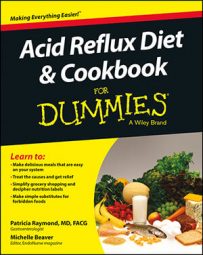What exactly does low-acid mean? Understanding the pH balance is part of getting started on the reflux diet. The categorization of low acid versus high acid has to do with where a food falls on the pH scale. Remember those TV commercials that advertised shampoos with the “right pH balance”?
Well, finding foods with the right pH balance is more important than finding pH-balanced shampoo, if you’re prone to acid reflux.
The pH scale is used to measure acidity and alkalinity, and everything in between. Keep in mind that the opposite of acid isn’t “the absence of acid.” The opposite of complete acid is complete alkalinity. That’s why the pH scale is a little more confusing than most scales. A pH of 0 is totally acidic, while a pH of 14 is completely alkaline. A pH of 7 is neutral.
Most water is close to pH 7 (neutral), whereas vinegar is pH 2.9 and lemon juice is pH 2.7. The normal level of stomach acid has a pH ranging from 1.5 to 3.5, but usually around 2. The hydrochloric acid that makes up stomach acid is some pretty impressive stuff. Fortunately, your stomach lining secretes mucous to coat the interior and protect itself against being burned or ulcerated.
You know about many foods that are acidic (citrus, tomatoes, and so on), but there are also acidic additives to be on the lookout for. Avoid these additives if you want to avoid reflux:
Ascorbic acid
Citric acid
Phosphoric acid
Anything labeled “Vitamin C added”
You may hear people say that they’re on an alkaline diet. That means they’re eating foods that are as close to neutral on the pH scale as possible. That means eating lots of fruits (except citrus) and vegetables, and avoiding foods that are acidic or that cause a lot of acid, such as red meat.
Alkaline diets are similar to the acid reflux diet. The foods that you’re supposed to eat on an alkaline diet are good for you (lean meats, lots of water, no soda) and are good for avoiding reflux as well.
Are you curious about the acid levels in your esophagus? There’s a way to test them. It’s called the 48-hour Bravo esophageal pH test. The test measures and records the pH in your esophagus and can determine whether you have gastroesophageal reflux disease (GERD). It measures how often stomach contents reflux into the lower esophagus and how much acid the reflux contains.
You don’t have to do this test to find out whether you have acid reflux. If you have acid reflux, you know you have acid reflux. However, it wouldn’t hurt to get a number on just how bad yours is. Such information can be valuable in getting you started on the acid reflux diet.

